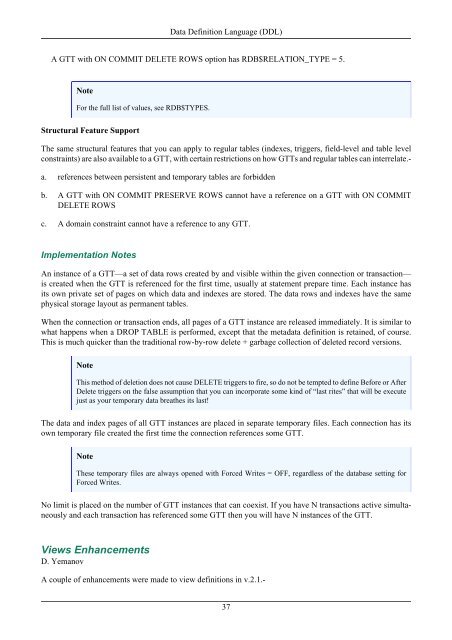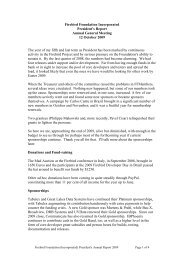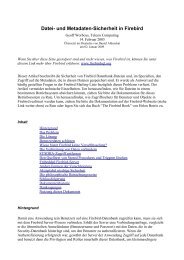Firebird 2.1 Release Notes
Firebird 2.1 Release Notes
Firebird 2.1 Release Notes
You also want an ePaper? Increase the reach of your titles
YUMPU automatically turns print PDFs into web optimized ePapers that Google loves.
Data Definition Language (DDL)<br />
A GTT with ON COMMIT DELETE ROWS option has RDB$RELATION_TYPE = 5.<br />
Note<br />
For the full list of values, see RDB$TYPES.<br />
Structural Feature Support<br />
The same structural features that you can apply to regular tables (indexes, triggers, field-level and table level<br />
constraints) are also available to a GTT, with certain restrictions on how GTTs and regular tables can interrelate.-<br />
a. references between persistent and temporary tables are forbidden<br />
b. A GTT with ON COMMIT PRESERVE ROWS cannot have a reference on a GTT with ON COMMIT<br />
DELETE ROWS<br />
c. A domain constraint cannot have a reference to any GTT.<br />
Implementation <strong>Notes</strong><br />
An instance of a GTT—a set of data rows created by and visible within the given connection or transaction—<br />
is created when the GTT is referenced for the first time, usually at statement prepare time. Each instance has<br />
its own private set of pages on which data and indexes are stored. The data rows and indexes have the same<br />
physical storage layout as permanent tables.<br />
When the connection or transaction ends, all pages of a GTT instance are released immediately. It is similar to<br />
what happens when a DROP TABLE is performed, except that the metadata definition is retained, of course.<br />
This is much quicker than the traditional row-by-row delete + garbage collection of deleted record versions.<br />
Note<br />
This method of deletion does not cause DELETE triggers to fire, so do not be tempted to define Before or After<br />
Delete triggers on the false assumption that you can incorporate some kind of “last rites” that will be execute<br />
just as your temporary data breathes its last!<br />
The data and index pages of all GTT instances are placed in separate temporary files. Each connection has its<br />
own temporary file created the first time the connection references some GTT.<br />
Note<br />
These temporary files are always opened with Forced Writes = OFF, regardless of the database setting for<br />
Forced Writes.<br />
No limit is placed on the number of GTT instances that can coexist. If you have N transactions active simultaneously<br />
and each transaction has referenced some GTT then you will have N instances of the GTT.<br />
Views Enhancements<br />
D. Yemanov<br />
A couple of enhancements were made to view definitions in v.<strong>2.1</strong>.-<br />
37
















